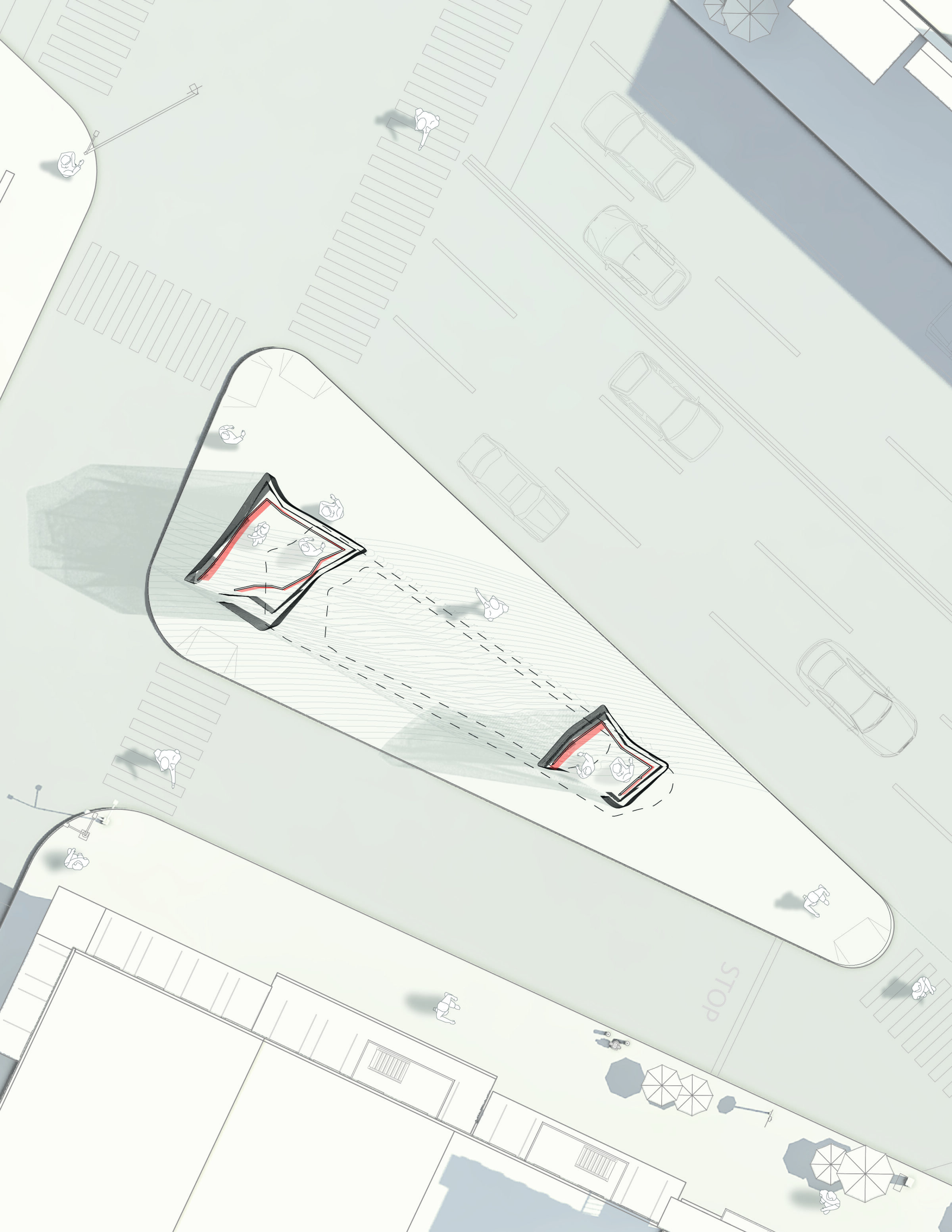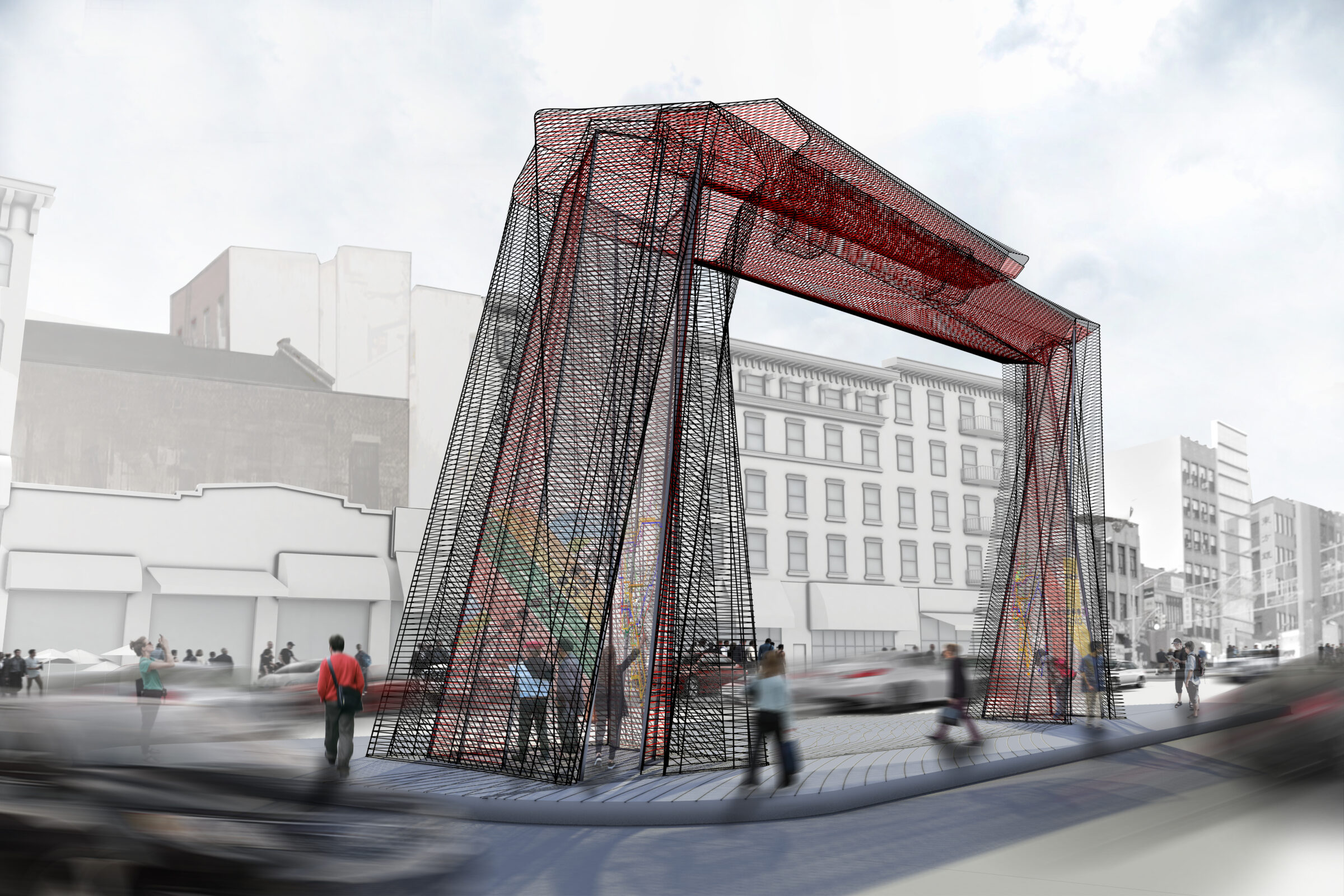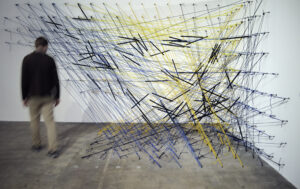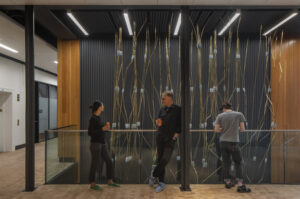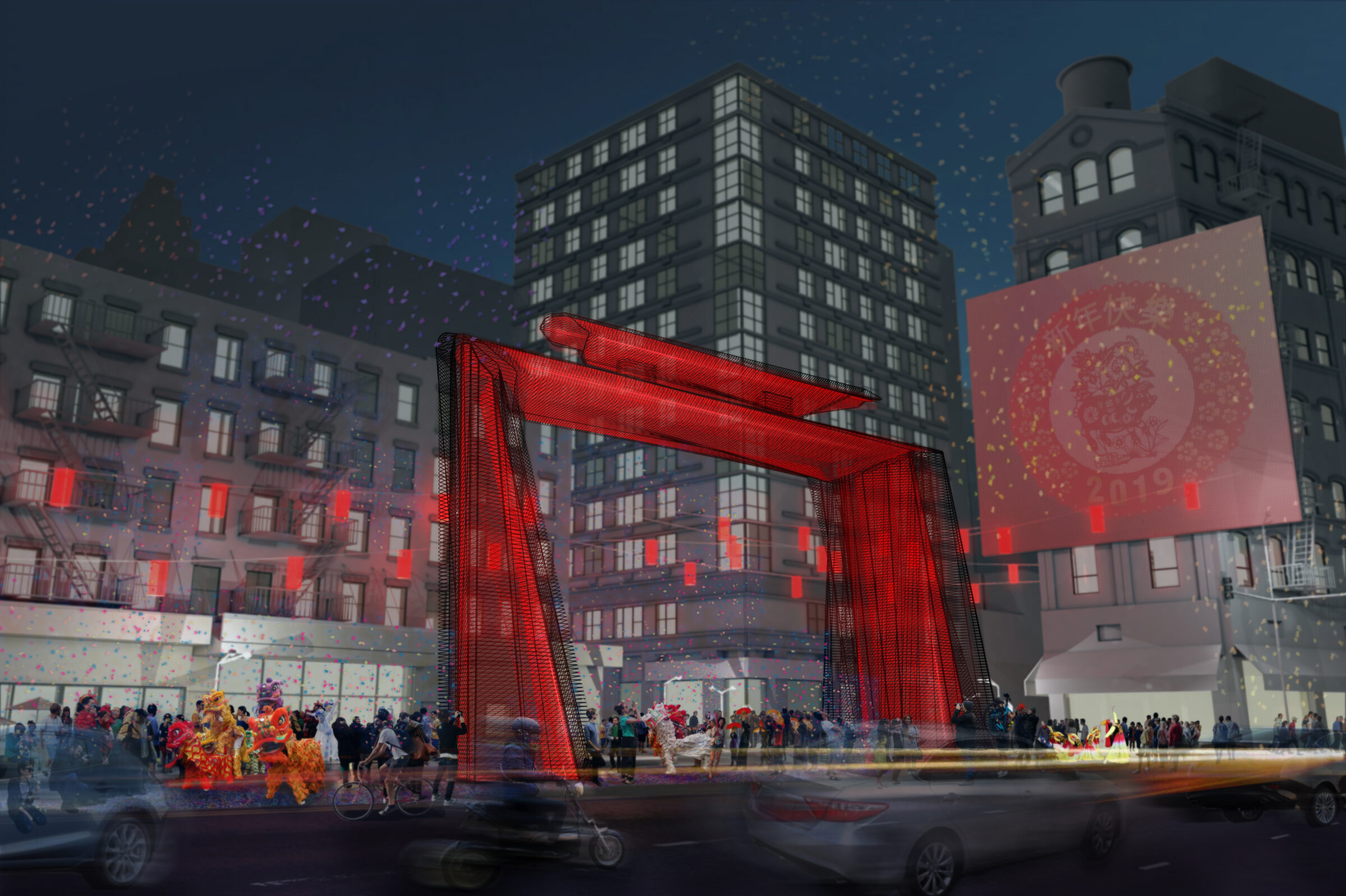
Type
Cultural
Location
Chinatown, NYC
Date
2017
Team
Lisa Little, Kristy Velasco, Aly Cornelius, Jack Stewart-Castner, Eunice Roh
Client
Van Alen Institute and NYC DOT Competition
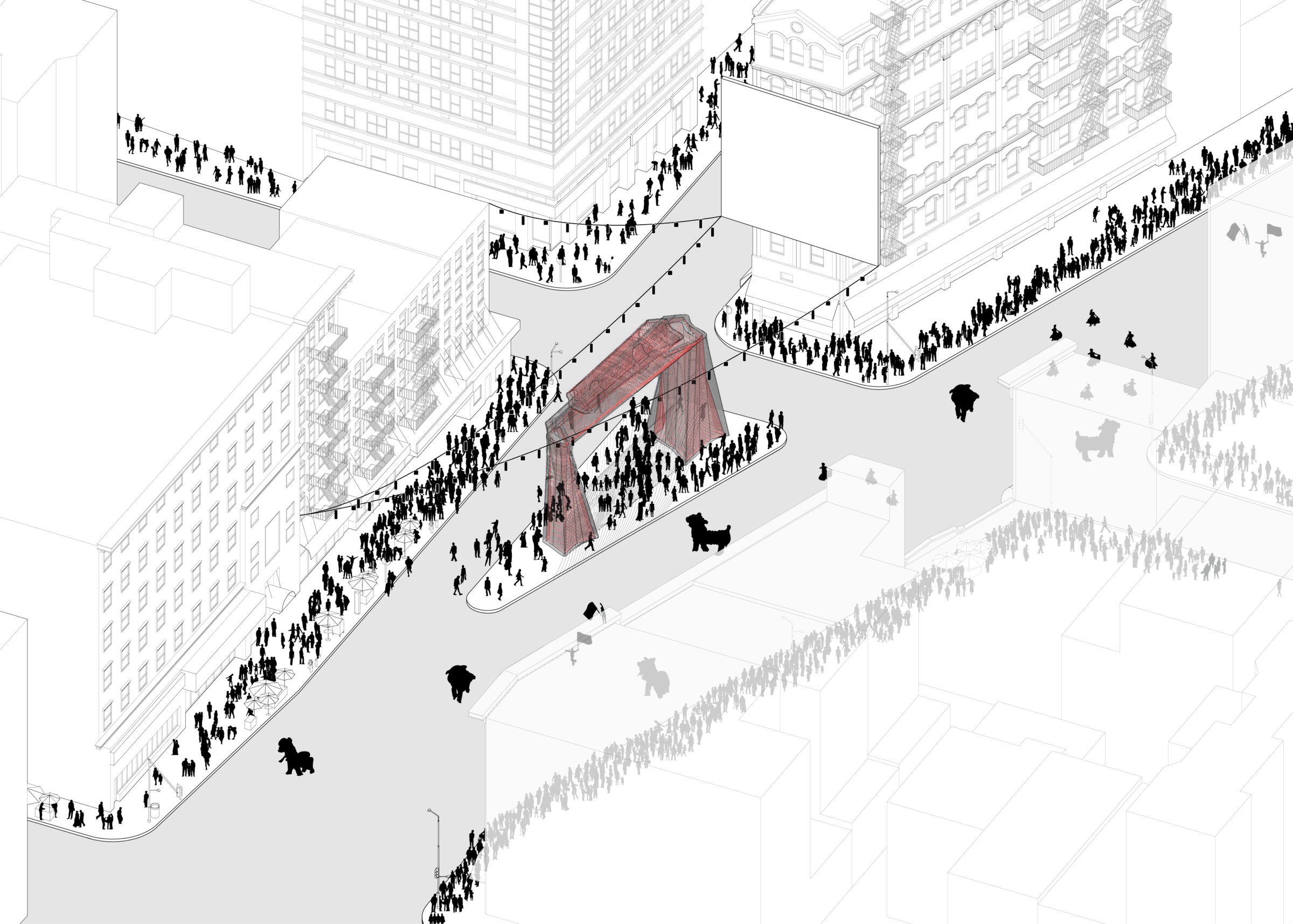
The creation of a new public art gateway for New York City’s Chinatown competition presented an opportunity to reconsider the neighborhood’s visual identity and role in the city. Vertebrae proposed a new gateway that looks forward rather than back and embraces the future, both visually and technologically – a contemporary, abstract version of the ornate symbols standing as Chinatown markers. The tall (forty-foot) volumetric archway form cants southeast, gesturing toward the center of Chinatown, simultaneously recognizable and majestic, but also elusive. Sketched out in space, the gateway changes appearance with the viewer’s position, sometimes solid, sometimes ethereal. The abstracted symbol embodies cultural diversity, blurring contemporary Chinese and American culture, and the dissolving boundaries between Chinatown and its adjacent neighbors, Little Italy and the Lower East Side. Through its scale and visual tectonics, the sculpture acts as gateway, neighborhood marker, meeting place, and social media opportunity, giving Chinatown an identifying icon while simultaneously giving NYC an additional tourist destination.
The iconic object is positioned on the site to allow full circulation and pedestrian flow as well as group gathering space around the monument. The design satisfies the frequent performance and festival needs of the neighborhood by maintaining open usable space, while the volume framed below the sculpture provides a grand “stage” for performances and events. Large interactive (transparent) displays located inside each column of the sculpture act as future forward self-help information kiosks and provide digital wayfinding and canvases for festivals, events and temporary art installations.
The free-standing sculpture is executed with horizontally organized laser-cut planar contours arranged into three layers, one outer layer in black and two inner layers in red. Each set of contours is connected with linear profiles. Planar and linear elements make fabrication more economically feasible. Parts, sized for transporting to the site via flatbed truck, are fabricated off site and then assembled on site into larger volumetric components engineered to operate as lightweight columns and beams.
Uniting six additional gateway sites, we proposed six additional groups of markers, smaller versions of the main gateway, canting to indicate the way into Chinatown. These smaller, essential elements materialize the edges and entrances, acknowledge the diffuse boundary, and unite the seven sites together.
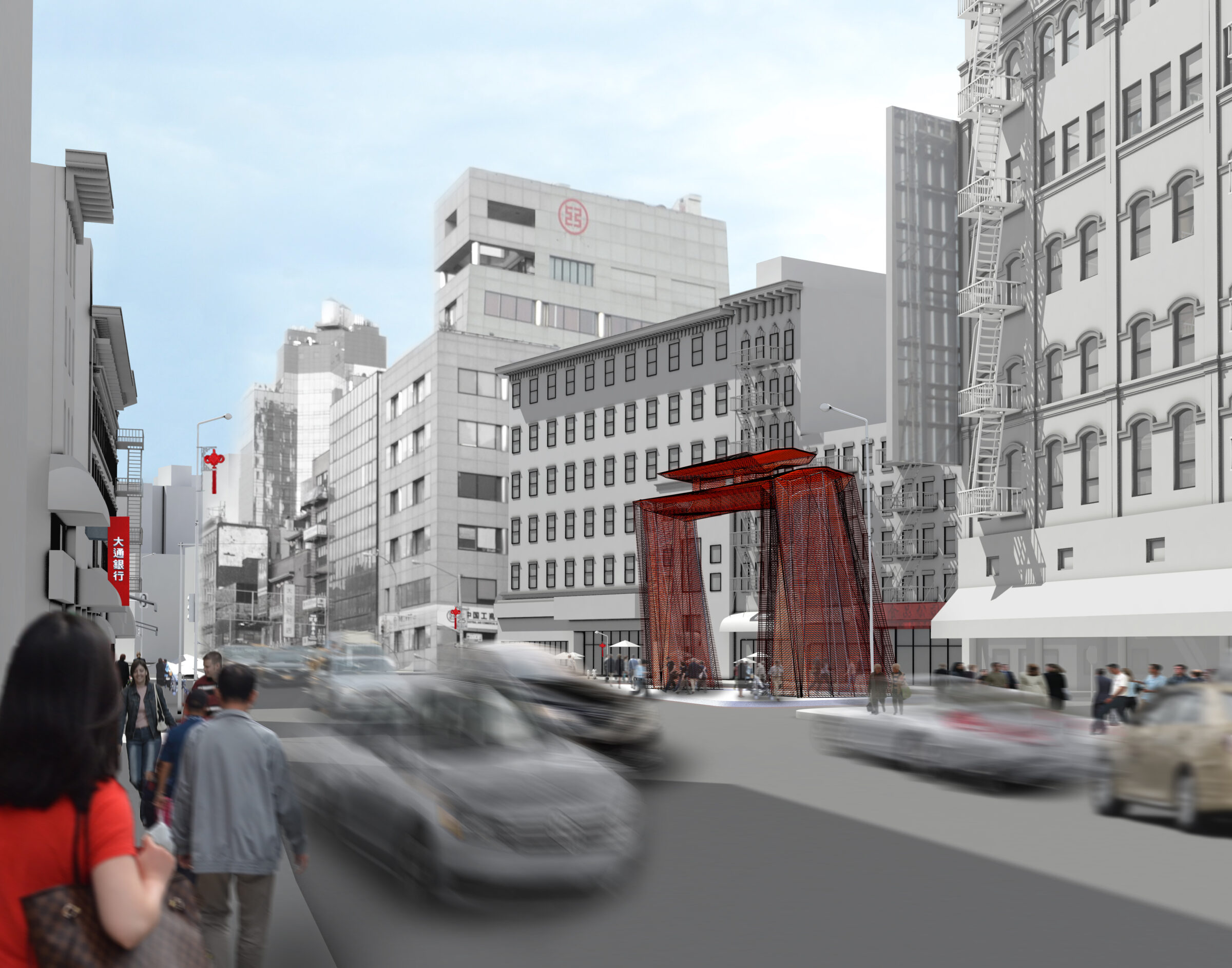
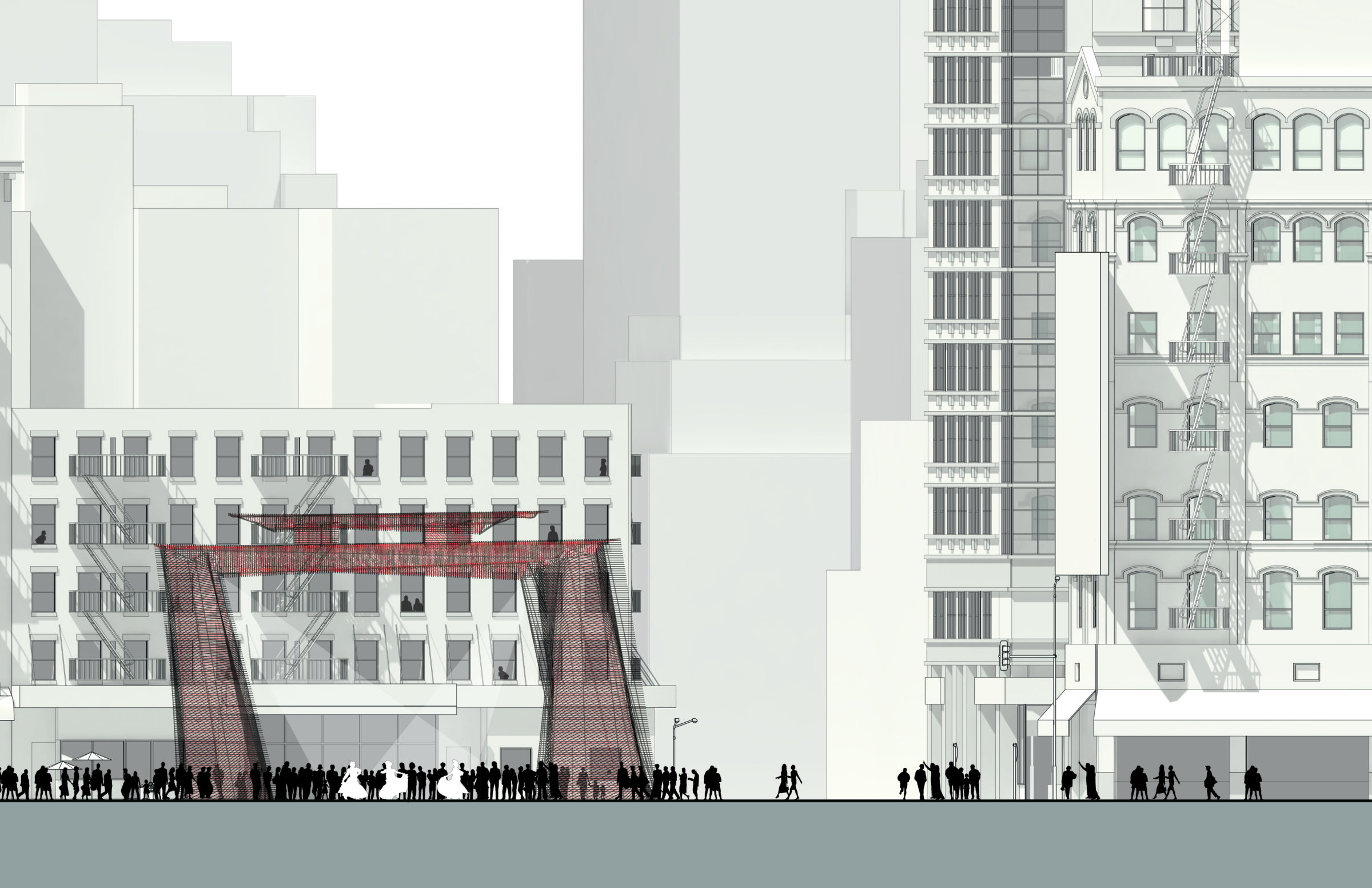
The tall (forty-foot) volumetric archway form cants southeast, gesturing toward the center of Chinatown, simultaneously recognizable and majestic, but also elusive. Sketched out in space, like an artist’s pencil might search out a shape on paper, the gateway changes appearance with the viewer’s position sometimes solid, sometime ethereal. The abstracted symbol embodies cultural diversity, the very blurring of contemporary Chinese and American culture, and the dissolution of boundaries between Chinatown and its adjacent neighbors, Little Italy and the Lower East Side. Through its scale and visual tectonics, the sculpture acts as gateway, neighborhood marker, meeting place, and social media opportunity, giving Chinatown an identifying icon while simultaneously giving New York City an additional tourist destination.
